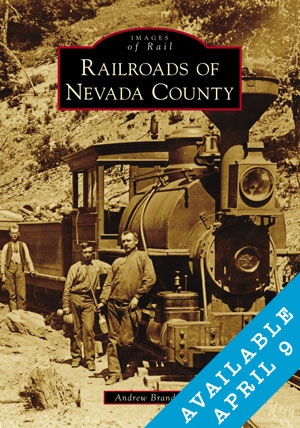

Notes on Russia Iron
From Jerry Kitts and Kyle WyattFrom: Jerry Kitts
Russian Iron
I received today (1/31/97) from Kyle K. Wyatt Curator of History of the Nevada State Railroad Museum the promised information on Russian Iron.
One of the following papers is copied word for word from the original The Engineering and Mining Journal, Dec. 1, 1888 pages 461 - 462. The paper was written by F. Lynwood Garrison, Journal of the U. S. Association of Charcoal Iron Workers. His paper is a summation of what Dr. Percy (Englishman) wrote prior to 1874. I also have the entire article written by Dr. Percy published in 1874. Garrison wrote the article because even in 1888 the general engineering society thought that Russian Iron was a secret. Its not a secret at all, in 1888 they didn't know were to look and in 1988 we still didn't know were to look for the information.
Our biggest problem in finding what Russian Iron was, that we did not know were to look. The Engineering and Mining Journal doesn't sound like a place for how to make Russian Iron. The good Doctor appears in the The Practical Metal - Workers Assistant back on page 633 in the appendix. For the record The Practical - Workers Assistant by Oliver Byrne and Published by Henry Carey Baird, Industrial Publisher, 406 Walnut Street Philadelphia was printed in 1874.
The first two paragraphs are of interest and sets the tone for what we need to know as modelers.
"A particular kind of sheet-iron is manufactured in Russia, which, so far as I know, has not been produced elsewhere. It is remarkable for its smooth, glossy surface, which is metallic gray, and not bluish gray, like that of common sheet-iron. On bending it backwards and forwards with the fingers no scale is separated, as is the case with sheet-iron manufactured in the ordinary way by rolling; but on folding it closely, as though it were paper, and unfolding it, small scales are detached along the line of the fold."
"In the following pages this kind of sheet-iron will be designated Russian Sheet-Iron. This sheet-iron is in considerable demand in Russia for roofing, and in the United States, where it is largely used in the construction of stoves and for encasing locomotive engines. I am informed that it is there named stove-pipe iron."
Pages 633 through 647 deal with how Russian Iron or Russian Sheet-Iron or Russia Iron is made by Dr. Percy. He also had five additional authors describe the process. Each a bit different for different locations in Russia. The sheet-iron from the Ural area was the best.
In Garrison's version he mentions first green then metallic gray. What he did is quote two different authors. Different areas in Russia made different colors of Russian Iron, which include dark metallic gray (Dr. Percy in general about Russian Iron), a greenish color (Prof. Pumpelly eastern flank of the Ural Mountains), brown and smoke-gray color (N. DE KHANIKOF both flanks of the Ural Mountains). Once again not bluish gray. No matter what color they came up with its always mirror like or glossy.
So much for my previous theory that the colors were produced by colored specks in surface color. As the following states: "A first-class sheet must be like a mirror, without a spot upon it."
I (we) have always speculated that one of the colors of Russian Iron was blue. Somebody probably put it in print a 100 years ago and we keep repeating it. The blue part probably came from reflection from the sky in somebody's description. Not solid blue like some importers like to have their engines painted. As a further personal opinion I'd say that the green boilers so popular with some roads (avoiding the D word) was an off shoot of the greenish color of some Russian Iron.
It was noted that teams of workers did the work and the 12 hour day was normal as it was in most of the world at the time. The workers were paid by the quality of their output. In short after the sheet-iron was graded you got paid. You got more for first class and less as the sheets were graded down to roofing material. There is also three pages on American Sheet Iron. Which is black or Silver Gray and the process was patented by two American companies prior to 1874.
I also have a June 10, 1870 Engineering book (London) page 407 large format paper describing the process as far as I can tell (because the reprint is so poor) is the same stuff of Dr. Percy's writing.
I also have a 1986 analysis by Kobe Steel of Japan using a piece of Russian Iron from V&T #12.
And a 1883 flyer for Russian Iron, not a lot of help but it does give the sizes of the sheets for Locomotives.
I have about 15 pages of information if you need or want more information than just colors for your models I can copy the whole affair for you. In case I get 50 requests it would be nice if you throw in a couple of bucks for copying and postage. For those of you with a back yard iron works you will have enough information to make your own Russian Iron.
Jerry Kitts
+=+=+=+=+=+=+=+=+=+=+=+=+=+=+=+=+=+=+=+=+=+=+=+=+=+=+=+=+=+=+=+=+=+=+=+=+=+=+=+=+
Dec. 1, 1888 The Engineering and Mining Journal. 461-462
MANUFACTURE OF RUSSIAN SHEET IRON.*
There appears to be much misunderstanding in reference to the manufacture of sheet iron in Russia, and questions are frequently asked the writer: "What are the secrets connected with it?" "How is it made?" "Could admission be obtained to the iron works in the Urals, where this iron is made?" It is difficult to understand why such questions should be asked by persons versed in the literature of iron and steel, for Dr. Percy wrote a very excellent and accurate monograph on the subject a number of years ago.
Not having had the opportunity of personally visiting the Russian iron works in the Urals, Dr. Percy's paper was compiled from data furnished him by a number of persons who visited these sheet iron works. Since it has been my good fortune to have the opportunity of seeing some of these works in the Urals but a short time ago, I will, at the risk of telling an old story, briefly describe the process of manufacture as I saw it.
The ores used for the manufacture of this iron are mostly from the celebrated mines of Maloblagodatj, and average about the following chemical composition: Metallic iron 60 per cent, silica 5 per cent, phosphorus from 0.15 to 0.06 per cent. The ore is generally smelted into coal pig-iron and converted into malleable iron by puddling or by a Franche-Comté hearth. Frequently, however, the malleable iron is made directly from the ore in various kinds of bloomaries. The blooms or billets thus obtained are rolled into bars 6 inches wide, 1/4" inch thick, and 30 inches in length. These bars are assorted, the inferior ones "piled" re-rolled whilst the others are carefully heated to redness and cross-rolled into sheets about 30 inches square, requiring from eight to ten passes through the rolls. These sheets are twice again heated to redness and rolled in sets of three each, care being taken that every sheet before being passed through the rolls is brushed off with a wet broom made of fir, and at the same time that powdered charcoal is dexterously sprinkled between the sheets. Ten passes are thus made, and the resulting sheets trimmed to a standard size of 25 by 56 inches. After being assorted and the defective ones thrown out, each sheet is wetted with water, dusted with charcoal powder and dried. They are then made into packets containing from 60 to 100, and bound up with the waste sheets.
The packets are placed one at a time, with a log of wood at each of the four sides in a nearly air-tight chamber, and carefully annealed for five or six hours. When this has been completed the packet is removed and hammered with a trip hammer weighing about a ton, the area of its striking surface being about 6 by 14 inches. The face of the hammer is made of this somewhat unusual shape in order to secure a wavey appearance on the surface of the packet. After the packet has received ninety blows equally distributed over its surface it is reheated and the hammering repeated in the same manner. Some time after the first hammering the packet is broken and the sheets wetted with a mop to harden the surface. After the second hammering the packet is broken, the sheets examined to ascertain if any are welded together, and completely finished cold sheets are placed alternately between those of the packet, thus making a large packet of from 140 to 200 sheets. It is supposed that the interposition of these cold sheets produces the peculiar greenish color that the finished sheets posses on cooling.
This large packet is then given what is known as the finishing or polishing hammering. For this purpose the trip hammer used has a larger face than the others, having an area about 17 by 21 inches. When the hammering has been properly done, the packet has received 60 blows equally distributed, and the sheets should have a perfectly smooth, mirror-like surface. The packet is now broken before cooling, each sheet cleaned with a wet fir broom to remove the remaining charcoal powder, carefully inspected, an the good sheets stood on their edges in vertical racks to cool. These sheets are trimmed to regulation size (28 by 56 inches) and assorted into Nos. 1, 2, 3, according to their appearance, and again assorted according to weight, which varies from 10 to 12 lbs. per sheet. The quality varies according to color, and freedom from flaws or spots. A first-class sheet must be without the slightest flaw and a peculiar metallic gray color, and on bending a number of times with the fingers, very little or no scale is separated, as in the case of ordinary sheet iron. The peculiar property of Russian sheet iron is the beautiful polished coating of oxides ("glanz") which it possesses. If there is any secret in the process, it 1probably lies in the "trick" of giving this polish. As far as I was able to judge, from personal observation and conversation with the Russian iron masters, the excellence of this sheet iron appeared to be due to no secret, but to a variety of conditions peculiar to and nearly always present in the Russian iron works of the Urals. Besides the few particulars already noted in the above description of this process, it should be borne in mind that the iron ores of the Urals are particularly pure, and that the fuel used is exclusively charcoal and wood. Another, and equally as important consideration, lies in the fact that this same process of manufacturing sheet iron has been carried on in the Urals for the last hundred years. As a consequence, the workmen have acquired a peculiar skill, the want of which has made attempts to manufacture equally as good iron outside of Russia generally less successful. It is difficult to understand what effect the use of charcoal powder between the sheets as they are rolled and hammered has upon the quality. It is equally as difficult to understand the effect of the interposition of the cold finished sheets upon the production of the polished coating of oxide. The Russian iron master seem to attribute the excellence of their product more to this peculiar treatmentthan to any other cause. One thing is quite certain, there is no secret about the process, and if the Russian sheet iron is so much superior to any other, it is due to the combination causes already indicated.
*Paper by F. Lynwood Garrison, Journal of the U.S. Association of Charcoal Iron Workers.
Additional Comments by Kyle Wyatt
From: KyleWyatt Date: Tue, 24 Mar 1998 02:41:14 EST Subject: Re: Russian Iron
In a message dated 3/23/98 8:20:16 AM, Jeff Saxton wrote: >I have a book by Guy Dunscomb and son, with Robert Pecotich, titled "Southern Pacific Steam Pictorial, volume I". In it, there is a treatise on how Russia Iron was made and processed, it mirrors much of what Lee said regarding quality, export grades, etc. It also points out a tidbit that American Rolling Mills (ARMCO) developed "American Iron" as a product to compete with true Russia Iron.
American iron was developed by Woods and Sons Iron Co. over the course of the 1870s and 80s (including some industrial espionage in Russia in the early 1880s). This may have been the predecessor for the ARMCO product listed in an ad in the 1930 Loco Cyc (I sent the reference to Guy Dunscomb). The Southern Pacific used the ARMCO product on some 4-8-2s built in the 1920s.
>My point is, and I would appreciate Kyle's input, I know pantone PMS colors do not accurately reflect the true color of the materials (pantones are designed as inks, to be applied over white), but: This book has several pantone matches for locos in the CSRRM, as well as other nifty tidbits. Are these colors roughly accurate? They list three if I recall, all in the blue to gray range.
The Smithsonian Institution used a paint to represent Russia iron on their narrow gauge 1876 4-4-0 in the 1970s. The California State Railroad Museum (CSRM) and the Nevada State Railroad Museum (NSRM) both used this same paint color. This is the Pantone match in Dunscomb's book. It is MUCH too light. In 1991 Chris deWitt, master mechanic at NSRM, developed a hot dip chemical "bluing" (not really all that blue) for a new jacket on the V&T #22 in preparation for Railfair in Sacramento. This is a reasonably accurate representation of the real Russia iron color - matched to a sample. Later Chris made a jacket for Dan Markoff's "Eureka" (check a video, as Tom Cruse suggested) and for the Overfair engine in the lobby of CSRM. Also, in a case in the lobby of CSRM is an 1880s model of a Central Pacific 4-4-0 engine which has a real Russia iron jacket.
Another point in the book outlines perhaps where painted green jackets come from, vis; as Russia Iron became unavailable due to the Russian revolution, and as true Russia Iron required frequent wipings to maintain it, one SP official said to paint all jackets to match a specific loco in the yards, which had a greenish Russia Iron jacket. Seeing as Russia Iron varied from deep reds to dark blues, this may explain why RR's like the Southern, Great Northern, B & O, D & RGW, SP, etc..... had green or blue jackets on steam into the thirties and beyond.
The story that the Russian Revolution killed Russia iron has been around for a long time, but personally I question it. Russia iron was always expensive. As paint technology on hot surfaces improved, more and more railroads started painting loco jackets. Also the Woods and Sons American iron was finally able to match the quality of Russia iron. These factors reduced the demand for the Russian product in the early 20th century. By the time of the revolution, there was very little Russia iron being imported.
As to the blues and greens used by railroads to paint jackets, I'm fairly confident that this was NOT an actual color match of any Russia iron. Rather the colors were chosen perhaps as representations, and as appropriate colors inspired by Russia iron, but lighter so they would stand out more. Also remember that when Russia iron jackets were common, most locomotives were NOT painted black, so the jacket provided a nice contrast. With a black painted loco, the blue or green jacket provided the contrast.
There has been a great deal of "common knowledge" (mythology) printed about Russia iron for a number of years. The model magazines have printed a lot of "information", almost exclusively from people who have never actually seen a Russia iron sample. Most of this has started a guesswork, and subsequently been presented as documented fact. This makes it all the more difficult to get accurate info out to people. (It's always harder to learn something when you have to start by unlearning earlier info.)
I've been fortunate to actually see a number of samples of real Russia iron (and a couple of early samples of American iron). I've also been researching the material for 20 years, and drawing on research by others from before that. There is a lot that we still don't know, but a great deal of information has come to light that was not previously available.
I will shortly be providing a color slide of a sample to Model Railroader (which they may or may not be able to print accurately). Hopefully we will eventually be able to get accurate info available. For modeling, remember that small models in interior lighted areas generally need to be painted lighter than the original in order to "look" right.
Sorry to go on so long on this topic. It seems to have attracted a great deal of interest - made more difficult because the most available means for conveying colors don't work well for such deep tone colors. Hope this has helped.
cheers
-Kyle Wyatt



